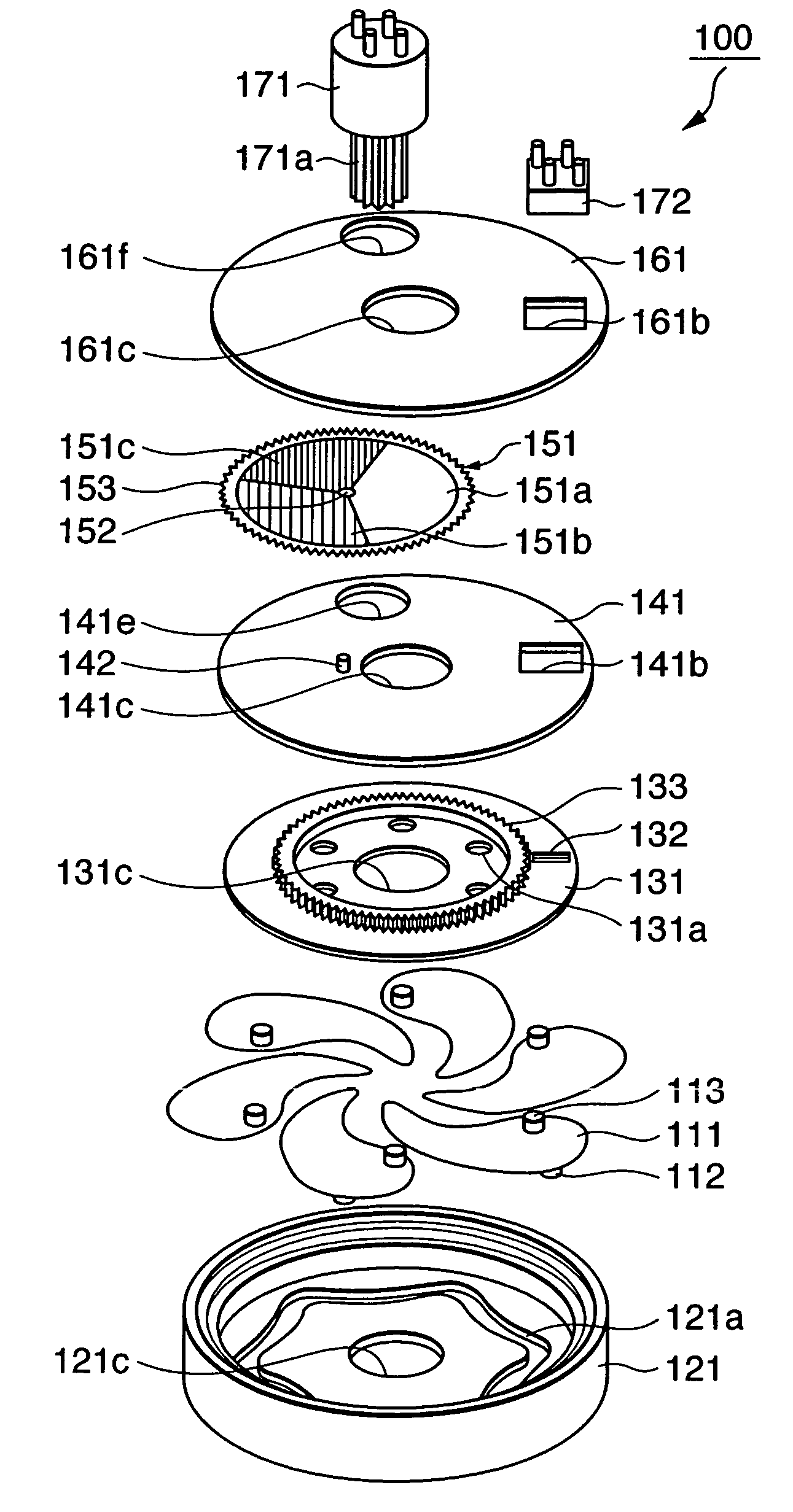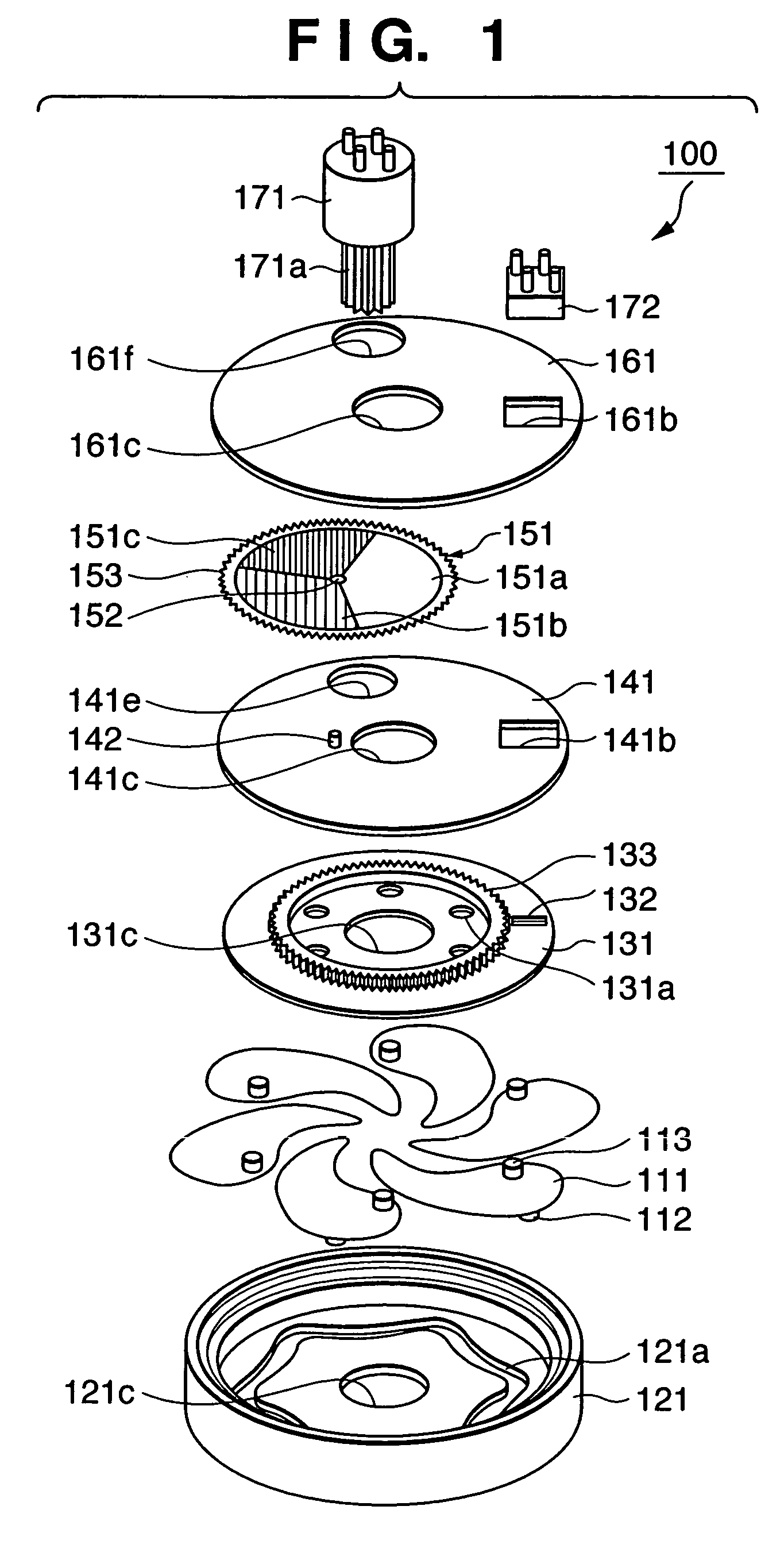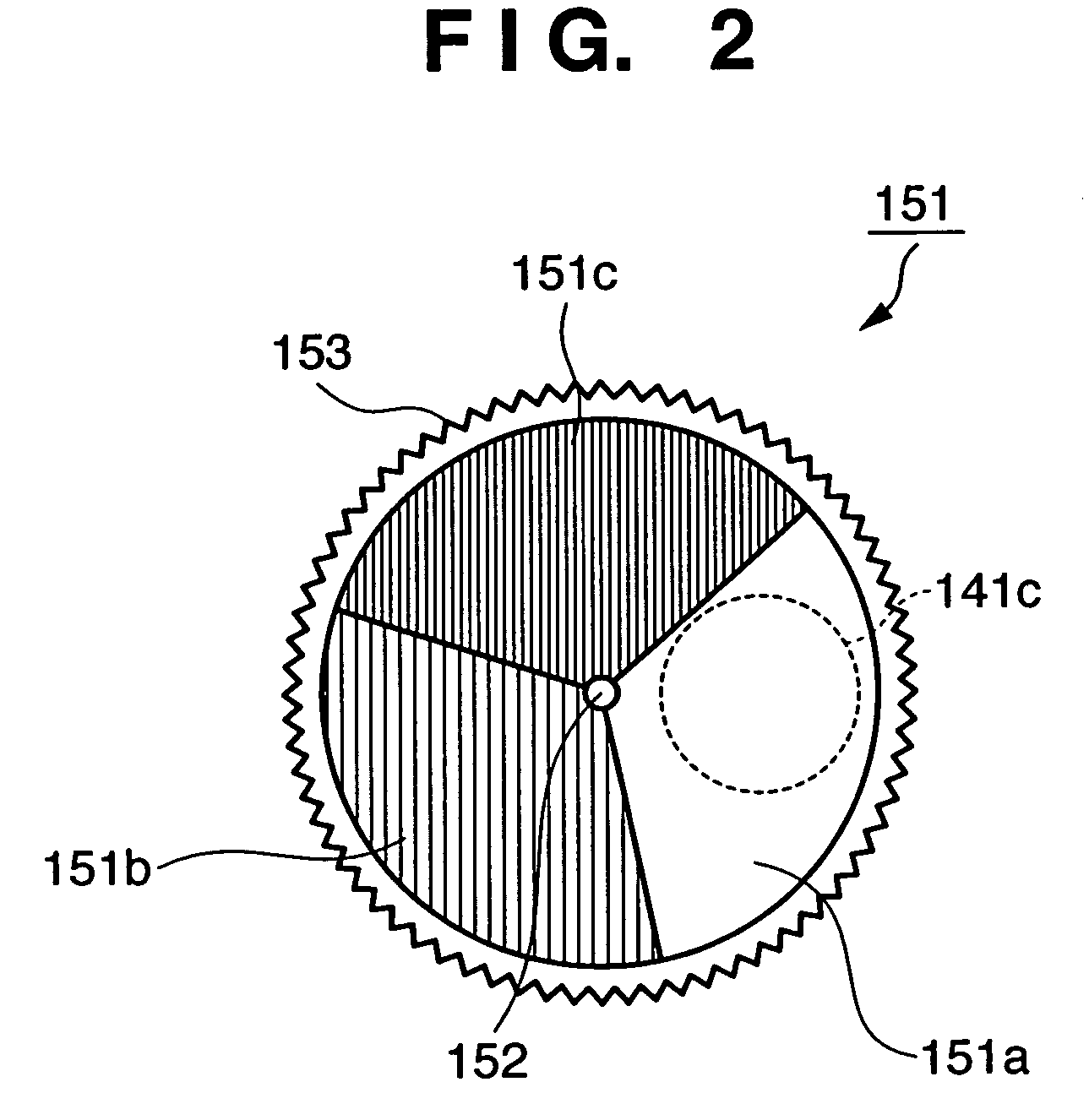Light amount control apparatus, photographing apparatus, and filter
a technology of light amount control and photographing equipment, applied in the field of light amount control equipment, can solve the problems of deteriorating continuity of exposure control, no high-resolution images can be obtained, and inability to achieve well the original image forming performance, etc., and achieve the effect of large degree of freedom of light amount control
- Summary
- Abstract
- Description
- Claims
- Application Information
AI Technical Summary
Benefits of technology
Problems solved by technology
Method used
Image
Examples
first embodiment
(First Embodiment)
[0064]FIGS. 1 to 11C are views related to the first embodiment.
[0065]FIG. 1 is an exploded perspective view of the main parts of a light amount control apparatus 100 according to this embodiment. In FIG. 1, reference numeral 111 denotes an aperture blade having light-shielding properties over the entire region. Pins 112 and 113 to be driven stand upward from the lower and upper surfaces, respectively, of the aperture blade 111. A stop aperture is formed by using six aperture blades 111 having the same shape. As the number of the aperture blades 111 increases, the aperture shape becomes close to a circle during stopping down, and this improves the naturalness of blurred images and reduces diffraction at the apexes of the polygonal aperture. However, the manufacturing cost also increases. In the stop mechanism of this type, therefore, the number of aperture blades is preferably 5 to 9. As shown in FIG. 1, this embodiment uses the six aperture blades to optimize the s...
second embodiment
(Second Embodiment)
[0162]In the light amount control apparatus used in the first embodiment, the aperture blades and ND filter are driven by one actuator. In the second embodiment described below, aperture blades and ND filter are driven by independent actuators.
[0163]FIG. 12 is an exploded perspective view for explaining the structure of a light amount control apparatus 200 of the second embodiment. FIG. 12 corresponds to FIG. 1 of the first embodiment.
[0164]In FIG. 12, reference numeral 211 denotes an aperture blade having light-shielding properties over the entire region. Pins 212 and 213 to be driven stand upward from the lower and upper surfaces, respectively, of the aperture blade 211. A stop aperture is formed by using six aperture blades 211 having the same shape.
[0165]Reference numeral 221 denotes a base plate for holding the aperture blades 211. In the center of the planar bottom surface, an opening 221c which defines the maximum diameter of a light beam at open aperture i...
third embodiment
(Third Embodiment)
[0190]In the ND filter used in the second embodiment described above, a disk-like filter is divided into a plurality of regions to give different optical densities to these regions, and the optical density distribution of each divided region is uniform. In an ND filter of the third embodiment described below, however, the optical density changes step by step or continuously along the circumference of a disk-like filter.
[0191]FIG. 17A is a plan view for explaining details of the optical density distribution of an ND filter 351 of the third embodiment. FIG. 17A corresponds to FIG. 13 of the second embodiment. A disk-like ND filter 351 has the same mechanical arrangement as that of the ND filter 151 of the first embodiment and the ND filter 251 of the second embodiment. That is, the ND filter 351 is obtained by forming an ND pattern (to be described later) on a transparent resin film, for example, a PET (PolyEthylene Terephthalate) film about 0.1 mm thick by inkjet pr...
PUM
 Login to view more
Login to view more Abstract
Description
Claims
Application Information
 Login to view more
Login to view more - R&D Engineer
- R&D Manager
- IP Professional
- Industry Leading Data Capabilities
- Powerful AI technology
- Patent DNA Extraction
Browse by: Latest US Patents, China's latest patents, Technical Efficacy Thesaurus, Application Domain, Technology Topic.
© 2024 PatSnap. All rights reserved.Legal|Privacy policy|Modern Slavery Act Transparency Statement|Sitemap



